China’s ‘Levitating’ Maglev Train Soars to New Heights, Surpassing 623 km/h
China’s state-of-the-art maglev train, developed by the China Aerospace Science and Industry Corporation (CASIC), has achieved a remarkable feat by surpassing its previous speed record of 623 km/h (387 miles per hour) during tests in a low-vacuum tube. While the exact speed attained has not been disclosed, CASIC hailed the latest test as a “significant breakthrough,” marking the first time the ultra-fast hyperloop train achieved stable levitation while travelling through a low-vacuum tube.
This groundbreaking achievement brings China closer to its ambitious goal of developing a high-speed train capable of matching or even surpassing the speed of commercial aeroplanes, as reported by the South China Morning Post.
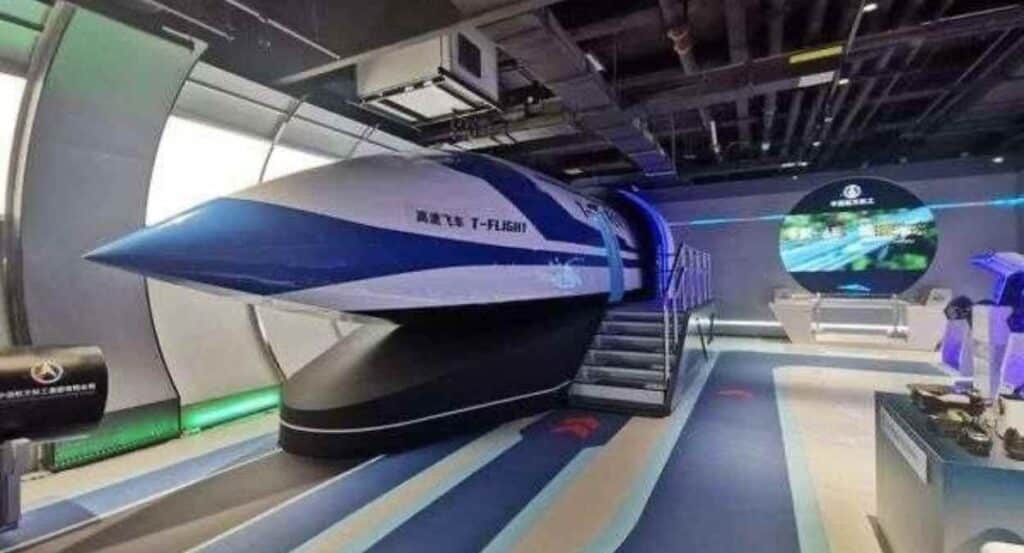
Integrating Aerospace and Rail Technologies for Unprecedented Speed
The high-speed train project is a remarkable integration of aerospace and terrestrial rail transport technologies, with a designed speed of up to 1000 km/h, surpassing commercial aviation speeds. According to Mao Kai, the project’s chief designer, “Science and technology progress step by step, and some aspects of this project are still in uncharted territory in China. Every step is challenging, and it’s a complex system.”
The CASIC informed that the tests helped improve the overall technical maturity of the system and laid a solid foundation for future higher-speed tests and the construction of a national-level transport network.
Cutting-Edge Maglev Technology Propels China’s Ambitions
Maglev (magnetic levitation) technology is at the heart of China’s ultra-fast hyperloop train. By utilizing magnetic forces, the train “levitates” above the track, eliminating rolling resistance and allowing for higher speeds. The train also propels forward using magnetic propulsion, with air resistance being the only source of friction.
To further boost the speed, the train was tested in a specifically designed low-vacuum tube, reducing air resistance and enabling it to achieve unprecedented velocities.
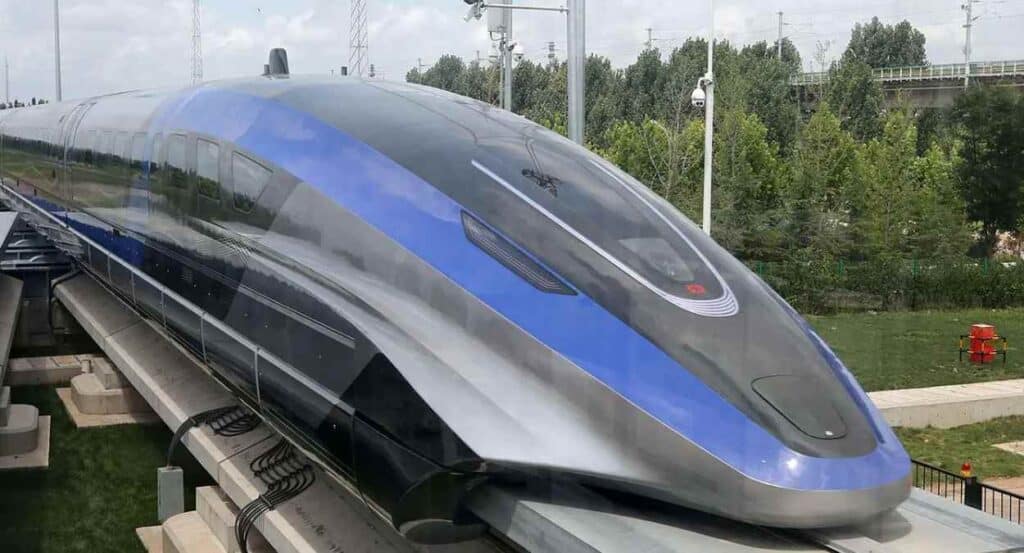
Key Facts and Figures of the maglev train :
- China’s maglev train, developed by the CASIC, has surpassed its previous speed record of 623 km/h (387 miles per hour) during tests in a low-vacuum tube.
- The exact speed achieved has not been disclosed, but CASIC has hailed the test as a “significant breakthrough.”
- This is the first time the ultra-fast hyperloop train achieved stable levitation while travelling through a low-vacuum tube.
- The high-speed train project integrates aerospace and terrestrial rail transport technologies, with a designed speed of up to 1000 km/h, surpassing commercial aviation speeds.
- Maglev technology allows the train to “levitate” above the track using magnetic forces, eliminating rolling resistance and enabling higher speeds.
- The train was tested in a low-vacuum tube to further reduce air resistance and boost its velocity.
- The tests have improved the overall technical maturity of the system and laid the groundwork for future higher-speed tests and the construction of a national-level transport network.
China’s Ambitious Journey Towards Unparalleled Speed
China’s pursuit of ultra-fast transportation has been driven by a relentless quest for innovation and technological advancement. The country’s maglev train project is a testament to its ambition to push the boundaries of what is possible in the realm of high-speed transportation.
The integration of aerospace and terrestrial rail transport technologies is a unique approach that combines the best of both worlds, leveraging the expertise and knowledge gained from both industries to create a truly exceptional mode of transportation.
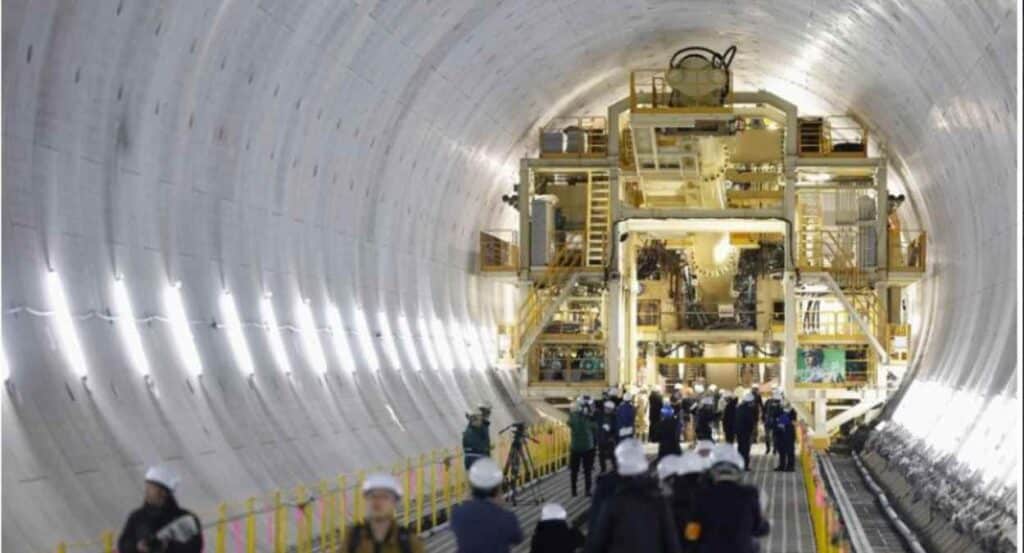
The use of maglev technology, which allows the train to levitate above the track using magnetic forces, is a critical component of this project. By eliminating rolling resistance, the train can achieve speeds that were once thought impossible for a rail-based system.
However, the team behind this project recognizes that there are still uncharted territories to explore and challenges to overcome. As Mao Kai, the project’s chief designer, noted, “Every step is challenging, and it’s a complex system.”
To further enhance the train’s speed potential, the team turned to low-vacuum tube technology. By reducing air resistance, this approach allows the train to reach unprecedented velocities, potentially surpassing the speed of commercial airplanes.
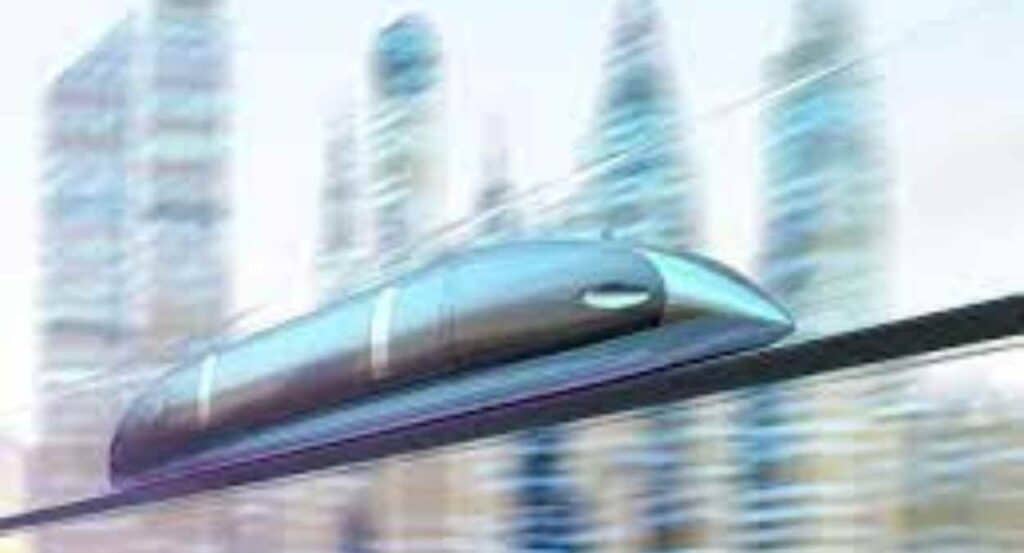
The latest tests have not only set a new speed record for the system but have also validated several key technologies and proven that they work well together. This success has improved the overall technical maturity of the project and laid a solid foundation for future higher-speed tests and the eventual construction of a national-level transport network.
As China continues to push the boundaries of high-speed transportation, the world will be watching with keen interest to see if this ambitious project can truly deliver on its promise of a train that can match or even surpass the speed of commercial airplanes.
Frequently Asked Questions (FAQs)
Q. What is a maglev train?
A maglev train is a high-speed train that uses magnetic levitation (maglev) technology to “levitate” above the track, eliminating rolling resistance and allowing for higher speeds. The train also propels forward using magnetic propulsion, with air resistance being the only source of friction.
Q. What is the significance of China’s maglev train breaking its own speed record?
By surpassing its previous speed record of 623 km/h, China’s maglev train has achieved a significant breakthrough in ultra-fast hyperloop train technology, bringing the country closer to its goal of developing a high-speed train capable of matching or even surpassing the speed of commercial airplanes.
Q. What is the designed speed of China’s high-speed train project?
The high-speed train project integrates aerospace and terrestrial rail transport technologies, with a designed speed of up to 1000 km/h, surpassing commercial aviation speeds.
Q. How does testing the train in a low-vacuum tube contribute to higher speeds?
Testing the train in a specifically designed low-vacuum tube reduces air resistance, allowing the train to achieve unprecedented velocities and potentially surpass the speed of commercial airplanes.
Q. What are the key technologies validated during the latest tests?
The latest tests not only set a new speed record for the system but also validated several key technologies, including the interaction between the vehicle tube and track, the powerful movement systems, and the overall safety controls, proving that they work well together.
Q. How have the tests improved the overall technical maturity of the project?
The successful tests have improved the overall technical maturity of the system and laid a solid foundation for future higher-speed tests and the construction of a national-level transport network, bringing China one step closer to realizing its ambition of ultra-fast transportation.
Q. What other projects is the CASIC working on related to high-speed transportation?
In addition to the maglev train project, the China National Space Administration, the CASIC department, is also working on the country’s next-generation commercial aerospace electromagnetic launch systems, further expanding its expertise in cutting-edge transportation technologies.
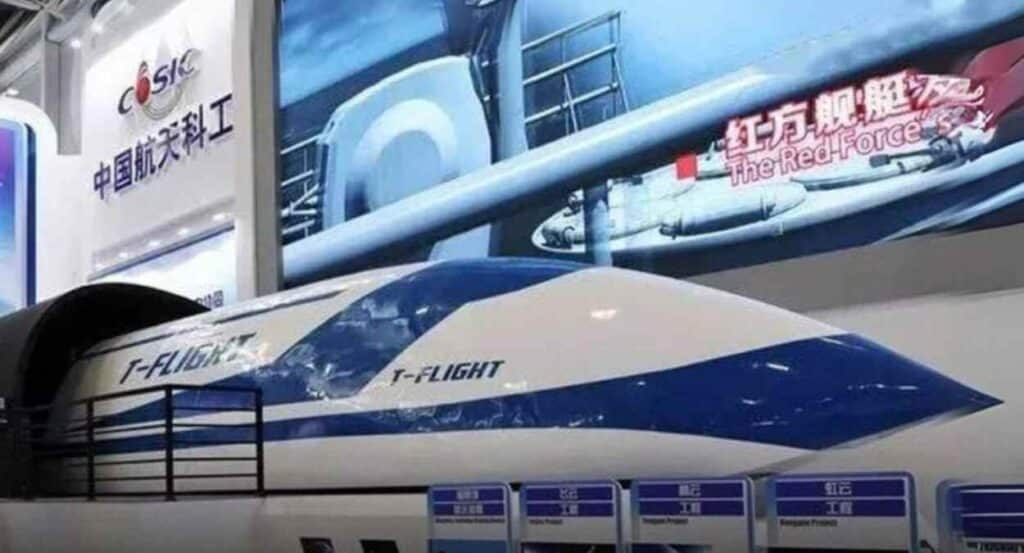
Conclusion:
I want to conclude this article with these bullet points :
- China’s maglev train, developed by the CASIC, has achieved a remarkable feat by surpassing its previous speed record during tests in a low-vacuum tube, marking a significant breakthrough in ultra-fast hyperloop train technology.
- This achievement brings China closer to its goal of developing a high-speed train capable of matching or surpassing the speed of commercial airplanes.
- The project integrates aerospace and terrestrial rail transport technologies, with a designed speed of up to 1000 km/h, surpassing commercial aviation speeds.
- Maglev technology allows the train to “levitate” above the track using magnetic forces, eliminating rolling resistance and enabling higher speeds.
- Testing the train in a low-vacuum tube further reduced air resistance, enabling the train to achieve unprecedented velocities.
- The tests have improved the overall technical maturity of the system and laid the foundation for future higher-speed tests and the construction of a national-level transport network.
- China’s pursuit of ultra-fast transportation is driven by a relentless quest for innovation and technological advancement, as the country continues to push the boundaries of what is possible in the realm of high-speed transportation.
Disclaimer:
This article was produced by USA Wini Media, an independent news and media organization. The views and opinions expressed in this article are those of the author(s) and do not necessarily reflect the official policy or position of USA Wini Media. Any content provided by our authors or contributors is their opinion and is not intended to malign any religion, ethnic group, club, organization, company, or individual.
Also Read :
Sora: OpenAI’s Revolutionary AI Generates Hollywood-Caliber Videos Instantly
India Issues “Update Now” Warning for Millions of Google Chromebook Users In 2024
NASA Discovers A New ‘Super Earth’ in the Habitable Zone At Just 137 Light Years






























